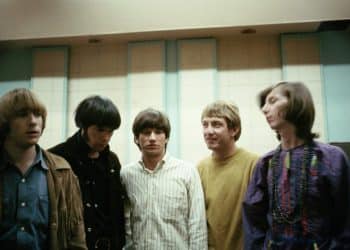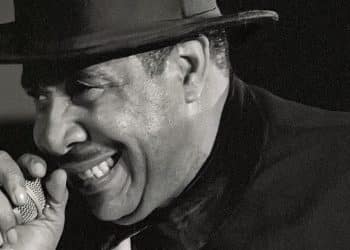In the world of music, the piano stands as an iconic and versatile instrument, shaping genres and emotions with its rich, resonant tones. From classical compositions to contemporary hits, the piano has been at the heart of countless unforgettable melodies. In this article, we delve into the realm of the Top 15 Most Popular Piano Songs of All Time, celebrating pieces that have transcended generations and genres. These selections span a diverse range of styles, from the timeless elegance of classical works by masters like Beethoven and Chopin to the modern brilliance of artists such as Elton John and Ludovico Einaudi. Each song on this list has made a significant impact, whether through its intricate melodies, emotional depth, or sheer popularity. As we explore these masterpieces, we’ll uncover the stories behind their creation, their influence on the music world, and why they continue to captivate audiences today. Whether you’re a seasoned pianist or simply a music lover, join us on this journey through the most celebrated piano compositions ever crafted.
1. Moonlight Sonata by Ludwig van Beethoven
Ludwig van Beethoven’s “Moonlight Sonata,” formally known as Piano Sonata No. 14 in C-sharp minor “Quasi una fantasia,” Op. 27, No. 2, stands as one of the most iconic and beloved piano compositions in classical music history. Composed in 1801, the piece was dedicated to Beethoven’s pupil, Countess Giulietta Guicciardi. It gained its popular name, “Moonlight Sonata,” after a critic likened its first movement to moonlight shining on Lake Lucerne, an imagery that continues to captivate audiences today.
The sonata is renowned for its striking emotional depth and innovative structure. Its first movement, marked “Adagio sostenuto,” is a hauntingly beautiful and tranquil piece with a flowing, arpeggiated accompaniment that sets a reflective and dreamy mood. The second movement, “Allegretto,” provides a gentle contrast with a more playful and light-hearted character. The sonata concludes with a dramatic “Presto agitato,” showcasing Beethoven’s mastery of virtuosic passages and dynamic contrasts.
“Moonlight Sonata” exemplifies Beethoven’s revolutionary approach to piano composition, blending lyrical expressiveness with technical brilliance. Its enduring popularity is a testament to its timeless appeal and profound emotional impact.
2. Fur Elise by Ludwig van Beethoven
Ludwig van Beethoven’s “Für Elise,” officially titled “Bagatelle No. 25 in A minor,” is one of the most recognizable and frequently played piano pieces in classical music. Composed in 1810, it was discovered posthumously and published in 1867, long after Beethoven’s death. The piece, characterized by its simple yet captivating melody, is often associated with the playful and charming qualities of Beethoven’s music.
“Für Elise” opens with its iconic, immediately memorable motif: a delicate, repetitive melody in A minor that has become synonymous with Beethoven’s name. The piece is structured in a rondo form, featuring alternating sections that contrast the main theme with more intricate passages, creating a delightful and engaging listening experience. The middle section introduces a contrasting, lively theme in C major, adding variety and contrast before returning to the original motif.
Though “Für Elise” is relatively brief, it is a brilliant example of Beethoven’s ability to create enduring and accessible music. Its technical demands are moderate, making it a popular choice for piano students and enthusiasts alike. The piece remains a staple in the piano repertoire, celebrated for its charm and simplicity.
3. Rolling in the Deep by Adele
Adele’s “Rolling in the Deep,” released in 2010 as the lead single from her second studio album “21”, is a powerful and emotive song that showcases her exceptional vocal prowess. Written by Adele and Paul Epworth, the track blends elements of soul, blues, and pop, creating a dynamic and memorable sound.
The song opens with a striking, percussive intro that sets the stage for Adele’s deep, resonant voice. Its verses build gradually, leading to a dramatic and soulful chorus where Adele delivers raw, heartfelt emotion. The lyrics, which speak to themes of betrayal and heartbreak, are delivered with intensity and conviction, resonating with listeners on a deeply personal level.
“Rolling in the Deep” received widespread acclaim for its strong vocal performance, compelling lyrics, and innovative production. It topped charts worldwide and earned Adele numerous awards, including Grammy Awards for Record of the Year and Song of the Year. The song’s fusion of powerful vocals and emotive storytelling has cemented it as one of the defining hits of the 21st century and a standout track in Adele’s impressive discography.
4. Hallelujah by Leonard Cohen
Leonard Cohen’s “Hallelujah,” originally released in 1984 on his album “Various Positions”, is a profoundly moving and influential song renowned for its rich, poetic lyrics and haunting melody. The track combines elements of folk, rock, and gospel, creating a unique and compelling sound that has resonated with listeners across generations.
The song’s lyrics explore themes of love, faith, and despair, using biblical and secular references to craft a narrative that is both deeply personal and universally relatable. Cohen’s deep, gravelly voice delivers the verses with a sense of contemplative gravity, enhancing the emotional depth of the song. The refrain “Hallelujah” is repeated throughout, creating a powerful, evocative chorus that underscores the song’s spiritual and emotional resonance.
Despite its initial lukewarm reception, “Hallelujah” gained widespread acclaim through subsequent covers by artists like Jeff Buckley and John Cale, each bringing their own interpretation to the song. Buckley’s 1994 cover, in particular, is celebrated for its ethereal, haunting quality, which has helped solidify the song’s place as a modern classic. Cohen’s “Hallelujah” is now considered one of the greatest and most enduring songs of the 20th century, known for its profound impact and timeless appeal.
5. Viva La Vida by Coldplay
Coldplay’s “Viva La Vida,” released in 2008 as a single from their album “Viva la Vida or Death and All His Friends”, is a grand and anthemic track that captures the band’s signature blend of melodic rock and orchestral elements. The song, written by Chris Martin, Guy Berryman, Jonny Buckland, and Will Champion, quickly became one of Coldplay’s most iconic hits.
The song opens with a stirring string arrangement that sets a dramatic tone, leading into Chris Martin’s evocative vocals. The lyrics, which depict a fallen king reflecting on his lost power and glory, are rich with historical and biblical imagery. The chorus, with its rousing refrain “I used to rule the world,” is both poignant and uplifting, creating a powerful contrast with the verses.
“Viva La Vida” was praised for its innovative production and orchestral arrangements, which marked a departure from Coldplay’s earlier, more straightforward rock sound. The song achieved widespread commercial success, topping charts around the world and earning the band multiple awards, including Grammy Awards for Song of the Year and Best Pop Performance by a Duo or Group with Vocals. Its blend of lyrical depth, emotive melody, and dynamic arrangement has made it a standout track in Coldplay’s discography and a modern classic.
6. The Scientist by Coldplay
Coldplay’s “The Scientist,” released in 2002 as the second single from their album “A Rush of Blood to the Head”, is a deeply introspective and emotionally charged song that has become one of the band’s most beloved tracks. Written by Chris Martin, Guy Berryman, Jonny Buckland, and Will Champion, the song is characterized by its poignant lyrics and haunting melody.
The song opens with a simple, yet memorable piano riff that sets the melancholic tone for the track. Chris Martin’s soulful vocals convey a sense of vulnerability and regret, as the lyrics explore themes of apology and the desire for reconciliation. The chorus, with its heartfelt plea “Nobody said it was easy,” encapsulates the song’s emotional depth and relatability.
The accompanying music video, known for its reverse narrative, visually complements the song’s themes of reflection and longing. “The Scientist” received critical acclaim for its lyrical sincerity and minimalist production, which highlights the band’s ability to evoke powerful emotions through simplicity. The song achieved commercial success and remains a staple in Coldplay’s live performances, celebrated for its timeless appeal and emotional resonance.
7. Someone Like You by Adele
Adele’s “Someone Like You,” released in 2011 as a single from her album “21”, is a deeply moving ballad that showcases her exceptional vocal talent and emotional depth. Written by Adele and Dan Wilson, the song is a poignant reflection on love and loss, capturing the essence of heartache and longing.
The track opens with a simple, yet elegant piano accompaniment that sets a somber and reflective mood. Adele’s powerful and soulful voice takes center stage as she delivers the lyrics with raw emotion and authenticity. The song’s narrative centers on coming to terms with a past relationship and the bittersweet realization that one must move on while still cherishing the memories.
“Someone Like You” gained widespread acclaim for its heartfelt lyrics and Adele’s evocative performance. The song topped charts around the world and earned numerous awards, including a Grammy Award for Best Pop Solo Performance. Its universal themes of love and heartache, combined with Adele’s stunning vocal delivery, have cemented “Someone Like You” as one of her most iconic and enduring hits.
8. Your Song by Elton John
Elton John’s “Your Song,” released in 1970 as the lead single from his self-titled album, is a timeless classic that has become one of the defining tracks of his illustrious career. Written by Elton John and his longtime collaborator Bernie Taupin, the song is renowned for its heartfelt simplicity and enduring appeal.
The track opens with a gentle piano melody, which is the perfect backdrop for John’s emotive vocals. The lyrics, characterized by their sincerity and honesty, convey a sense of vulnerability and romantic longing. The song’s straightforward structure and direct message make it a quintessential love ballad, capturing the essence of earnest admiration and affection.
“Your Song” received widespread critical acclaim and commercial success, reaching the top 10 on the charts in both the UK and the US. Its charm lies in its authenticity and relatability, with John’s heartfelt delivery making it a favorite among fans and a staple of his live performances. The song’s enduring popularity is a testament to its classic songwriting and Elton John’s unique ability to convey deep emotion through his music.
9. Imagine by John Lennon
John Lennon’s “Imagine,” released in 1971 as the title track of his album, is a powerful and enduring anthem of peace and hope. Written by Lennon and co-produced with Yoko Ono, the song envisions a world free from conflict, division, and materialism, advocating for unity and harmony.
The song opens with a simple yet evocative piano melody that sets a serene and contemplative tone. Lennon’s vocals are calm and introspective, delivering the lyrics with a sense of profound sincerity. The verses outline a vision of a world without borders, religions, or possessions, presenting an idealistic dream of global peace and brotherhood.
“Imagine” received widespread acclaim for its lyrical simplicity and profound message, becoming one of Lennon’s most iconic and influential works. It topped charts worldwide and has been embraced as a universal anthem for peace. The song’s impact is reflected in its continued relevance and the numerous tributes and covers by artists across various genres. “Imagine” remains a timeless call for a better world, resonating with listeners of all generations.
10. Maple Leaf Rag by Scott Joplin
Scott Joplin’s “Maple Leaf Rag,” composed in 1899, is a seminal piece in the history of American music and a quintessential example of ragtime. Known for its syncopated rhythms and lively tempo, the rag has become one of Joplin’s most celebrated and enduring works.
The piece is structured in a traditional ragtime form, with its distinctive, upbeat melody and intricate piano arrangements. Joplin’s use of syncopation, where rhythms are played off the beat, creates a sense of rhythmic tension and excitement. The “Maple Leaf Rag” is characterized by its vibrant, jaunty style, and its influence on the development of early jazz and popular music is significant.
“Maple Leaf Rag” achieved considerable commercial success upon its release and has been a staple in the ragtime repertoire ever since. Its catchy, memorable melodies and complex rhythms have made it a favorite among pianists and listeners alike. Joplin’s innovative composition helped establish ragtime as a major musical genre and paved the way for future developments in American music.
11. The Entertainer by Scott Joplin
Scott Joplin’s “The Entertainer,” composed in 1902, is one of the most famous and enduring examples of ragtime music. Recognized for its lively, syncopated rhythms and playful melodies, the piece has become a defining work of Joplin’s career and a classic of American musical history.
“The Entertainer” features a catchy and memorable melody, characterized by its upbeat tempo and rhythmic complexity. The composition is structured in a traditional ragtime form, with distinct sections that showcase Joplin’s skillful use of syncopation, which creates a rhythmic “off-beat” effect that was revolutionary at the time. The piece is noted for its cheerful and spirited character, making it a favorite among both performers and audiences.
The rag gained widespread popularity in the early 20th century and experienced a revival in the 1970s when it was prominently featured in the soundtrack of the film “The Sting”. This resurgence introduced the piece to a new generation and solidified its place in American music culture. “The Entertainer” remains a quintessential example of ragtime and continues to be celebrated for its historical significance and enduring appeal.
12. Rhapsody in Blue by George Gershwin
George Gershwin’s “Rhapsody in Blue,” premiered in 1924, is a landmark composition that seamlessly blends elements of jazz, blues, and classical music. Written for solo piano and jazz band, this innovative piece has become one of Gershwin’s most iconic and influential works.
The composition opens with a striking clarinet solo that leads into a vibrant, syncopated piano melody, setting the stage for a dynamic and genre-defying musical experience. “Rhapsody in Blue” is characterized by its energetic rhythms, lyrical themes, and adventurous orchestration, reflecting the spirit of the Roaring Twenties and the burgeoning jazz age.
Gershwin’s ability to fuse classical techniques with jazz idioms created a unique sound that captivated audiences and critics alike. The piece is structured in a free-form rhapsodic style, allowing for both improvisatory freedom and cohesive thematic development. Its innovative approach and cross-genre appeal helped elevate Gershwin’s status as a major figure in American music.
“Rhapsody in Blue” was met with immediate acclaim and has remained a staple of the American musical repertoire. Its lasting impact is evident in its continued popularity and its influence on subsequent generations of composers and musicians.
13. Clair de Lune by Claude Debussy
Claude Debussy’s “Clair de Lune,” composed in 1890 and published in 1905 as the third movement of his Suite Bergamasque, is one of the most celebrated pieces in the impressionist piano repertoire. The title, which translates to “Light of the Moon,” aptly reflects the piece’s ethereal and evocative character.
“Clair de Lune” is known for its delicate and shimmering texture, achieved through Debussy’s use of rich harmonies, flowing melodies, and subtle dynamics. The piece opens with a gentle, cascading piano arpeggio that sets a dreamy and introspective mood. As the music unfolds, Debussy employs impressionistic techniques to create a sense of fluidity and color, evoking the serene beauty of moonlight.
The composition’s structure is characterized by its lyrical and improvisatory quality, with passages that suggest a sense of spontaneity and emotional depth. “Clair de Lune” is celebrated for its ability to capture the nuances of light and atmosphere, making it a quintessential example of Debussy’s impressionistic style.
The piece has enjoyed enduring popularity and is frequently performed in concert settings and featured in various films and media, continuing to enchant audiences with its timeless beauty and evocative charm.
14. Chopsticks
“Chopsticks” is one of the most recognizable and enduring piano pieces, celebrated for its simple yet charming melody. Originating in the early 19th century, it was initially composed by Euphemia Allen, a young English girl, under the pseudonym Arthur de Lulli. This playful tune quickly gained popularity due to its accessibility and catchy rhythm.
The piece’s title, “Chopsticks,” is a nod to the similarity between the rhythmic tapping of chopsticks and the song’s staccato notes. Although it is often one of the first pieces learned by novice pianists, its appeal transcends the beginner level. The song’s repetitive structure and cheerful melody make it a favorite in both casual and formal settings.
“Chopsticks” has been featured in numerous adaptations and arrangements, showcasing its versatility and enduring charm. It is often used to introduce young students to piano playing due to its straightforward pattern and immediate rewards. Despite its simplicity, the piece has secured a lasting place in the canon of classic piano music, symbolizing the joy and accessibility of learning to play the piano.
15. Bohemian Rhapsody by Queen
“Bohemian Rhapsody” by Queen is a groundbreaking and iconic piano-driven rock song that has captivated audiences since its release in 1975. Written by Freddie Mercury, the song defies conventional genre boundaries with its eclectic blend of opera, rock, and ballad styles. Its innovative structure features a seamless fusion of different musical segments, including a powerful operatic section, a hard rock explosion, and a reflective piano ballad.
The song begins with a hauntingly beautiful a cappella introduction, followed by a poignant piano melody that underpins Mercury’s expressive vocals. The operatic section, with its dramatic harmonies and theatrical flair, showcases the band’s exceptional musicianship and creativity. As the song transitions into a hard rock segment, the energetic guitar riffs and powerful drumming elevate the intensity before settling into a reflective coda.
“Bohemian Rhapsody” is renowned for its ambitious production and complex arrangement, which challenged the norms of popular music at the time. Its music video, considered one of the first of its kind, further cemented its legendary status. With its enduring appeal and innovative approach, “Bohemian Rhapsody” remains one of the most celebrated and influential piano songs in rock history.









